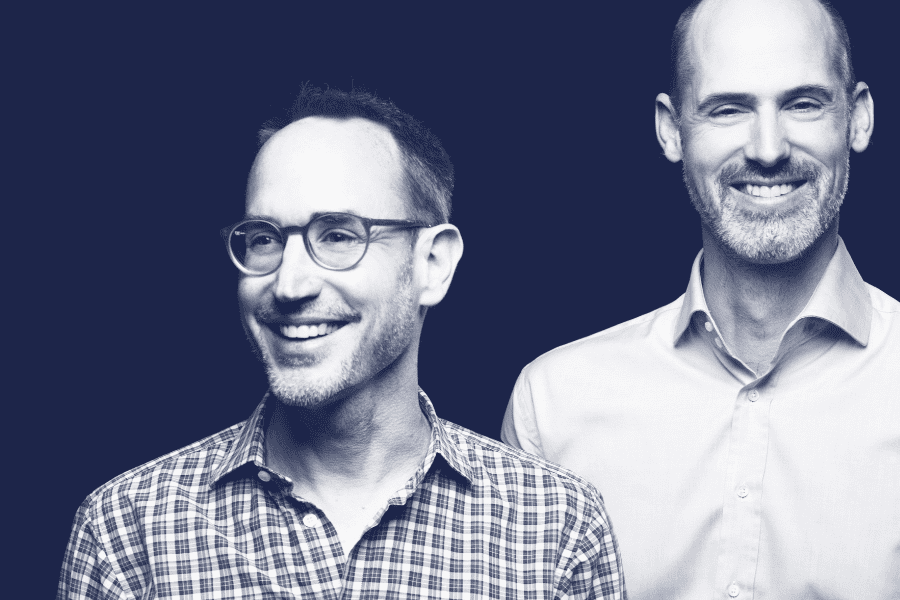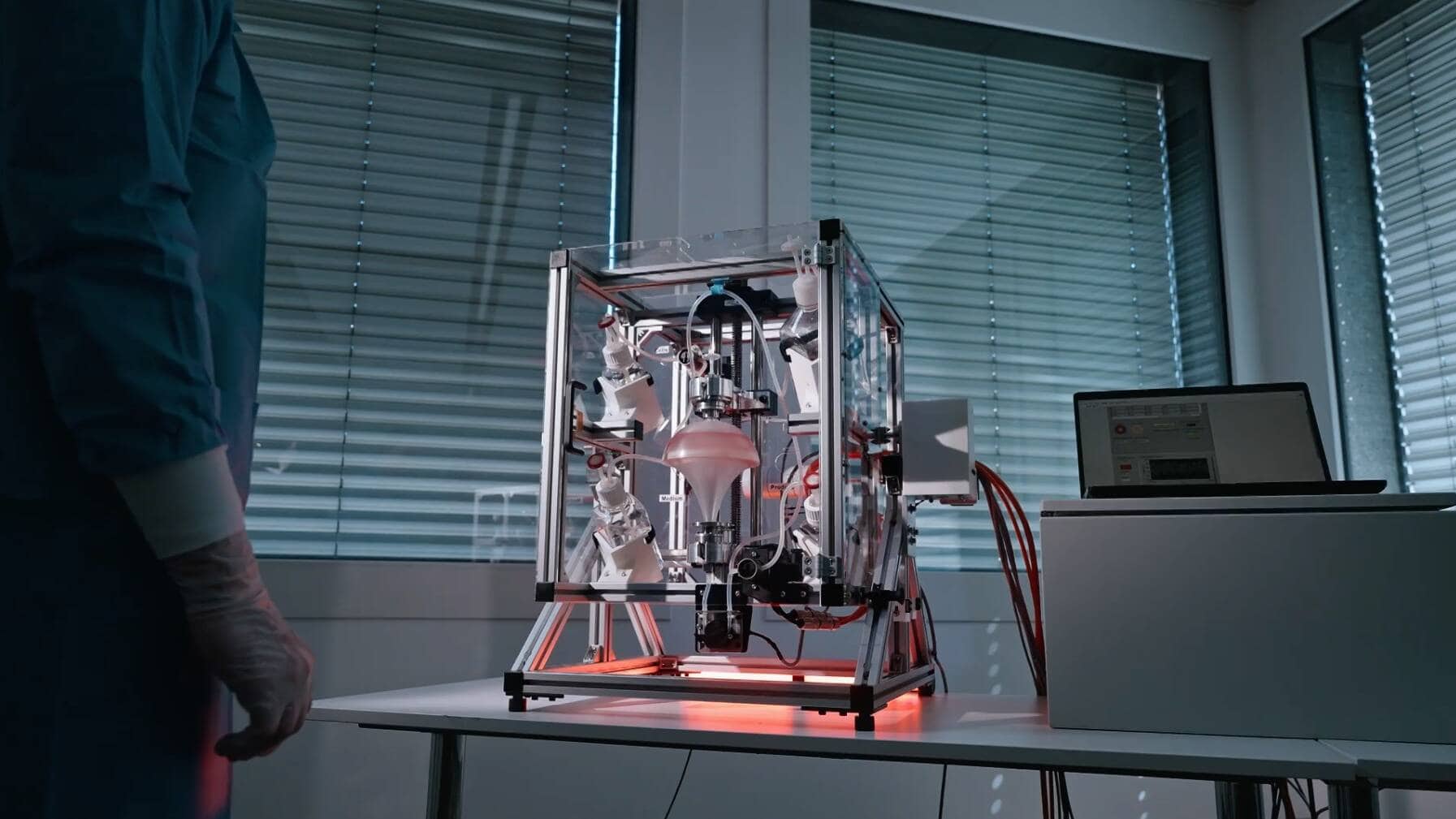Verve Ventures’ relationship with Menalto Advisors is going well: The Silicon Valley-based investment bank has successfully sold our portfolio companies Seervision, TestingTime and Alaya. In this interview, Jon Roberts, who moved from the Bay Area to Zurich five years ago, explains how founders can increase their odds of success and why European venture capital firms should stop financing zombie companies.

Co-founder, Menalto Advisors
Jon Roberts is a Managing Director and co-founder of Menalto Advisors. He has spent over a decade advising technology companies around the world on M&A, growth capital, and other strategic transactions. He has closed nearly 50 transactions with leading corporations and financial firms across a range of technology sectors. Select experience includes transactions with ABB, Apple, Carlyle Group, Google, Intel, Meta, NetEase, Qualcomm, Sony, and UiPath.
What is the state of the M&A market, specifically technology transactions below USD 1 billion, today?
It’s an average M&A market that reminds me a bit of the mid-late 2010s. Many tech startups raised at very high valuations in a frothy market in 2021 and early 2022. The market started to reset in 2022, and valuations today are down substantially from peak levels. Transactions are still getting done but typically at lower valuations, with larger and high-multiple transactions harder to come by. Consumer-facing and marketplace businesses have been among the most impacted. Many of these companies scaled quickly in 2021 using VC money but are now struggling due to a myriad of factors, including poor unit economics and limited access to growth capital. Deep tech startups are feeling the impact as well, although typically not as pronounced since they anyways take longer to develop, have differentiated technology, and are less susceptible to hype cycles.
You said many companies are looking for a buyer. Are there also companies that are unsellable?
Indeed there are, and for different reasons. Take, for example, consumer startups that lack meaningful technological differentiation and have little to no intellectual property. Until mid-2022, they were able to access hundreds of millions or billions of nearly “free” capital, enabling them to grow quickly at all costs. Now these same companies have limited, if any, funding options available to them and many are struggling. Many will sell for a fraction of their last round financing valuation, and some won’t be able to sell at any price.
Another category is startups that have built decent, growing businesses but simply raised at valuations that are much too high relative to their current market value. They can push to profitability, often by reducing headcount or raise more capital to keep growing but often at a “down round” valuation [at a lower valuation than their last financing round]. They are sellable, but the question is at what price, and whether this price is attractive relative to the alternative of continuing as a standalone business.
We would need to see a substantial increase in M&A activity to compensate for the significant increase in venture capital funding that occurred over the past several years. I suspect it will take another 2 – 3 years to reach a more typical equilibrium, and there will be many companies that simply don’t make it. I think it would be better for the ecosystem to reach this point faster, as there is a natural attrition or “failure” rate in the startup ecosystem that is totally normal and healthy.
Instead, what I’m seeing a lot of are “zombie” companies which are clearly no longer on a meaningful growth trajectory yet continue to stay alive, often by investors drip feeding the company small amounts of additional capital over many months or years. I see this more often in Europe than in the US. US companies are less likely to attract additional capital once it’s clear they’re no longer on track to generate a meaningful outcome, and thus they fail faster.
And in Europe?
In my opinion, it would benefit the ecosystem for investors to be bolder and faster in their portfolio triaging decisions. If a portfolio company is not achieving milestones and tracking towards raising an attractive next financing round, it makes sense to at least consider selling the company sooner. It’s inadvisable to continue funding VC-backed startups that are no longer tracking to a VC-scale exit. Too many European “zombie” startups are being kept half-alive with bridge financing rounds without a clear plan for how the additional capital will drive a step change in the company’s trajectory. US VCs tend to be more aggressive in triaging their portfolio, including writing off companies that don’t perform. It might seem harsh and clinical, but it’s important for VCs to focus the majority of their time and energy on portfolio companies that can drive fund returns.

Invest in Startups
As one of Europe’s most active venture capital investors, we grant qualified private investors access to top-tier European startups. With investments starting at EUR/CHF 10’000, you can build your own tailored portfolio over time and diversify across stages and sectors.
So, let’s focus on those who are performing well. When is the best time to sell a startup?
It depends on the startup and the circumstances. Ultimately the best time to sell a startup is unique to each company and encompasses a myriad of factors which impact the likelihood of a successful outcome.
One way to evaluate acquisitions is through the lens of the three “Ts” – Team, Technology and Traction – which describe the rationale for why buyers acquire startups at different stages.
In a “Team” sale or aquihire the startup being acquired is typically very early, with little to no revenue, and has often been founded by a highly technical team, founders with Ph. D.s or other advanced degrees. These deals can be attractive for the team, as buyers often heavily incentivize the team moving forward, but are often less attractive outcomes for investors.
In “Technology” acquisitions, the buyer values the startup’s technology / product and the team which built it. There is the possibility of achieving an outsized “promise value” outcome based not on the startup’s current size or financial performance, but instead based on the synergistic value the startup provides to the buyer going forward. This is often the first attractive exit window for investors.
“Traction” deals typically involve later-stage startups that have raised growth capital and have a more meaningful financial profile. Companies that IPO or achieve “financial value” exits are in this category. These can also be attractive depending on how much the company has raised and at what valuation.
Founders and investors should carefully assess the trajectory and potential of their startups to determine which “T” is best to target. While it’s tempting to say that “Traction” is always best, the reality is that many startups, including some with very interesting and highly differentiated technology, are unable to commercialize quickly enough to reach sufficient scale and achieve a financial value outcome. If these startups have been appropriately capitalized and valued, they might be able to achieve an attractive “Technology” acquisition. On the other hand, if the startup has raised growth capital but was unsuccessful in scaling, the exit price is typically less and often much less than the company’s last round financing valuation.
Naive investors argue that one should always raise growth funding and try. If it doesn’t work out, the startup can still be sold for the “promise value”. It’s like a downside protection.
I hear this often, and it’s simply wrong. If a company raises capital to scale but growth doesn’t materialize, it is very difficult and sometimes impossible to fall back on a “promise value” story. Said differently, it’s difficult to “sell the dream” if the company disproves the dream on a standalone basis. While there are many companies which should raise growth capital, there are some that would be much better off selling at the “Technology” stage. Something for founders and investors to discuss before raising growth financing.
How should clever founders consider increasing their odds of a successful M&A outcome?
Most founders are reactionary as it relates to M&A, and only prepare when “forced” to do so by circumstances. These circumstances can be positive, such as receiving an offer to buy the company, or negative, such as realizing, “oh crap, we’re running out of money”. If M&A is the lowest common denominator and path of last resort among founders, board, and investors, it is less likely to yield an attractive outcome. This is especially the case if negative circumstances, such as a short cash runway, dictate the need for a quick sale.
Another significant issue is that most startups have no idea what their buyer ecosystem prioritizes when it comes to potential acquisitions. For example, if you think you’re going to sell your startup to Salesforce but are only doing 500k of revenue, it’s important to know that Salesforce mainly considers M&A targets with much more substantial revenue profiles. Buyers have unique personalities and preferences. Looking at buyers’ past transactions is one indicator of their “buying personality”. For example, if a company you fancy as a buyer has never done an early-stage technology acquisition, the chances that your company will be the first are slim. And if you are the first, it will be painful. Well-prepared founders will understand their buyer landscape and get to know potential acquirers well in advance of M&A.
How do you do that?
Get on a plane! Or on a train. Or in a car. Many of the best deals are where the buyer and seller have developed relationships prior to the M&A process. The best mental model for a founder is a Venn diagram with three circles. One circle represents potential customers, one represents potential partners, and one potential buyers for the company. Prioritize getting to know companies that operate at the intersection of at least two of those circles, if not all three. Maybe start by establishing a partnership or customer relationship. Or consider integrating your technology with another company’s to show a combined solution or demo. There is no “one size fits all” right approach, but being proactive in interfacing with potential future buyers certainly increases the probability of an attractive exit.
For a startup with limited resources it is a challenge even to find out who to talk to in a 100.000 people corporation…
You need face time with the strategic decision-makers. Build relationships with them, including traveling to where they are located. Speaking to engineers alone is not enough. People who have strategic and P&L responsibility [those responsible for a company’s financial performance] as they are typically the ones who have the gravitas to do deals. Often, European founders are surprised and ask me: “Why did company X buy this competitor and not us? Their technology is inferior to ours.”
Why indeed?
Because they did not get on the plane and develop the right relationships with the right people. Instead, they mistakenly thought that continuing to develop their technology in their home country would by itself drive a great outcome. However, their competitor’s founder moved to the Bay Area and developed strong relationships with the relevant potential buyers. He met the Executive at a buyer running a large business unit and explained to him clearly and concisely why it would be advantageous for the buyer to acquire his startup. And it worked.
There are many incredibly talented entrepreneurs in Europe, and the technological base is strong. However, many highly technical founders de-prioritize building relevant relationships and connecting with people in the industry. They are also reluctant to spend money on business development and marketing, seeing it as a “waste” compared to spending the money on further technology development. For technical founders that struggle with this, I often recommend prioritizing hiring someone who is good at developing relationships and “selling” what the company does, a Head of Business Development for example.
What are the buyers looking for in these times?
It varies by buyer segment, but most Buyers are more cautious in their approach compared to a couple of years ago. They scrutinize startups’ burn rate [the rate at which companies consume their cash], and core operating and financial metrics. Unless the startup is a GenAI company, the ability of the startup to grow efficiently and retain its customers is now of paramount importance. Startups with differentiated technology that are scaling cost-effectively always attract buyer attention, irrespective of macro-economic conditions.
Written by
WITH US, YOU CANCO-INVEST IN DEEP TECH STARTUPS

Verve's investor network
With annual investments of EUR 60-70 mio, we belong to the top 10% most active startup investors in Europe. We therefore get you into competitive financing rounds alongside other world-class venture capital funds.
We empower you to build your individual portfolio.
More News
28.06.2024
How to step off the red carpet gracefully
How does it feel like to sell a company, and how does an entrepreneur find new meaning after an exit? In this interview, Marcel Megerle, who works with entrepreneurial families on such topics, shares his experience.
21.05.2024
“Entrepreneurship is like soccer, not tennis.”
Three-time founder turned venture capitalist Iñaki Berenguer now invests in extending the lives of people and the planet. In this interview, he shares lessons on entrepreneurship, what he learned from over 100 angel investments, and his reasons for co-investing with Verve Ventures in EPFL spin-off Limula.
02.04.2024
“Geography unites innovators”
Local proximity still matters, argues Julie Wagner, who devoted her career to the study of innovation districts. Even after the pandemic and amid technological advancements, she explains how select urban geographies are transforming research into a vibrant economy.
Startups,Innovation andVenture Capital
Sign up to receive our weekly newsletter and learn about investing in technologies that are changing the world.




